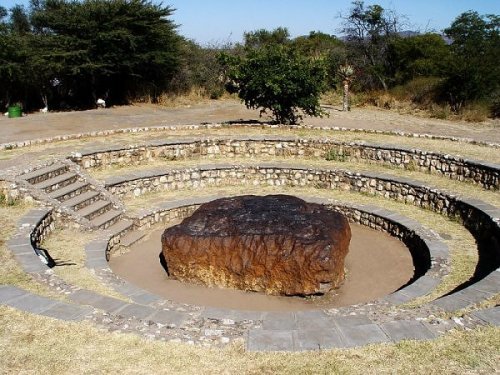(单词翻译:单击)
But the thinness of the clay layer clearly suggested that in Umbria, if nowhere else, something rather more abrupt had happened. Unfortunately in the 1970s no tests existed for determining how long such a deposit might have taken to accumulate.
但是,这层薄薄的黏土显然表明,在翁布里亚,如果不是在别处的话,事情发生得非常突然。不幸的是,在20世纪70年代,没有人研究过积累那么一层黏土需要多长时间。
In the normal course of things, Alvarez almost certainly would have had to leave the problem at that, but luckily he had an impeccable connection to someone outside his discipline who could help—his father, Luis. Luis Alvarez was an eminent nuclear physicist; he had won the Nobel Prize for physics the previous decade. He had always been mildly scornful of his son's attachment to rocks, but this problem intrigued him. It occurred to him that the answer might lie in dust from space.
在正常情况下,阿尔瓦雷斯几乎肯定不会去管这个问题。但是,非常走运,他跟有个能帮得着忙的局外人有着无可挑剔的关系──他的父亲路易斯。路易斯·阿尔瓦雷斯是一位著名的核物理学家,10年前曾获诺贝尔物理学奖。他对自己的儿子爱上岩石总是有点儿瞧不起,但他对这个问题很感兴趣。他突然想到,答案可能在于来自太空的尘埃。
Every year the Earth accumulates some thirty thousand metric tons of "cosmic spherules"—space dust in plainer language—which would be quite a lot if you swept it into one pile, but is infinitesimal when spread across the globe. Scattered through this thin dusting are exotic elements not normally much found on Earth. Among these is the element iridium, which is a thousand times more abundant in space than in the Earth's crust (because, it is thought, most of the iridium on Earth sank to the core when the planet was young).
每年,地球要积攒大约3万吨“宇宙小球体”──说得明白一点,太空尘埃,要是扫成一堆,那倒不少,但若是撒在整个地球上,那简直微乎其微。在这层薄薄的尘埃里,散布着地球上不大常见的外来元素。其中有元素铱。这种元素在太空里要比在地壳里丰富100倍(据认为,这是因为大部分铱在地球形成之初已经沉入地心)。
Alvarez knew that a colleague of his at the Lawrence Berkeley Laboratory in California, Frank Asaro, had developed a technique for measuring very precisely the chemical composition of clays using a process called neutron activation analysis.
路易斯·阿尔瓦雷斯知道,加利福尼亚州劳伦斯·伯克利实验室有一位名叫弗兰克·阿萨罗的同事,通过使用一种被称之为中子活化分析的过程,发明了一种能精确测定黏土化学成分的技术。


